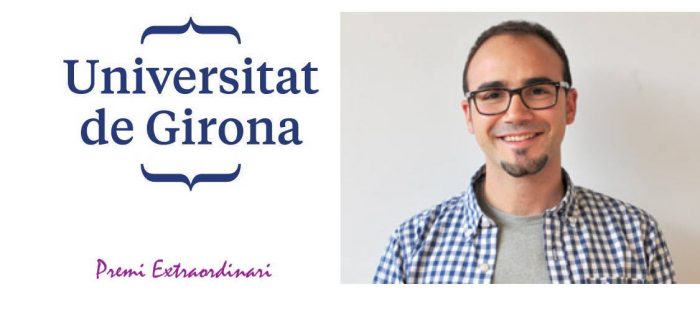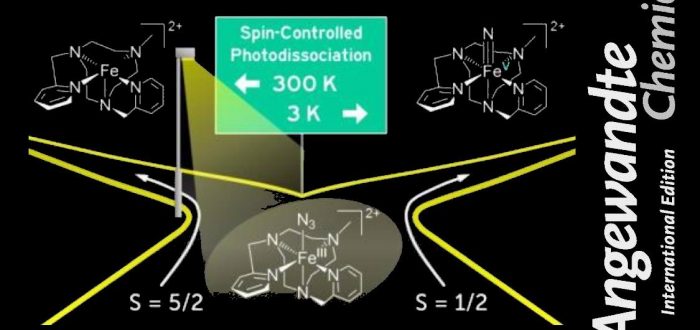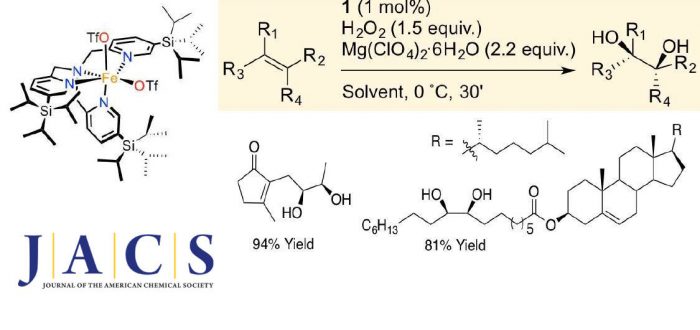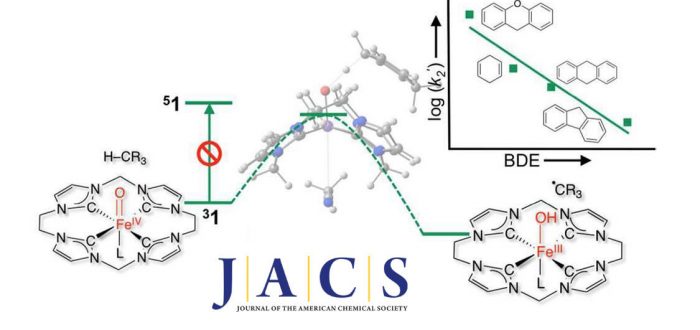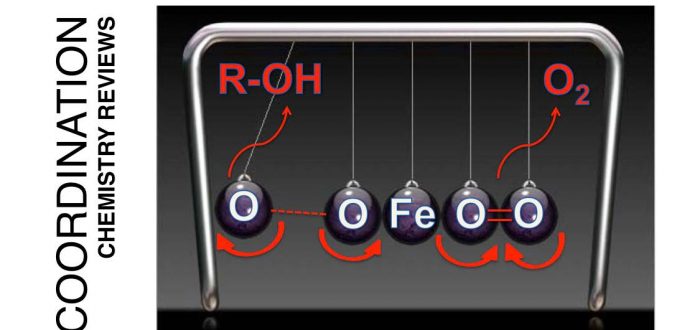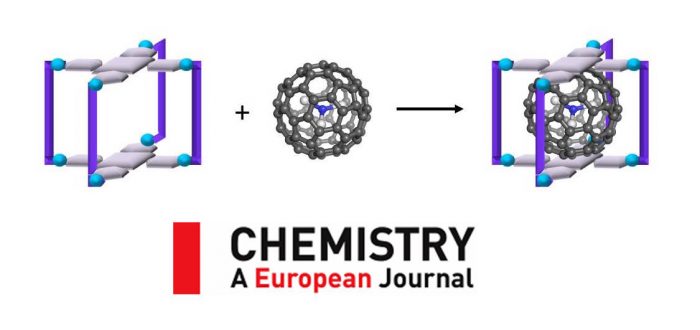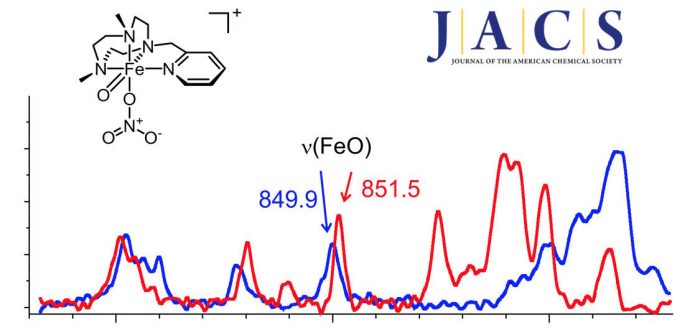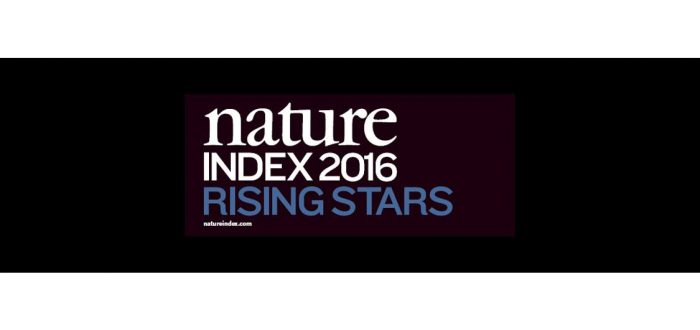Site-selective C-H functionalization of aliphatic alkyl chains is a longstanding challenge in oxidation catalysis, given the comparable relative reactivity of the different methylenes. A supramolecular, bioinspired approach is described to address this challenge. A Mn complex able to catalyze C(sp3)-H hydroxylation with H2O2 is equipped with 18-benzocrown-6 ether receptors that bind ammonium substrates via hydrogen bonding.
- sec.iqcc@udg.edu
- +34 972 41 83 57
Category: Miquel Costas news
This October, our former member of IQCC Joan Serrano was awarded the Premi Extraordinari for the best PhD thesis in 2016 from the University of Girona. Last year, he defended with success his PhD thesis on “Bioinspired copper and nonheme iron models for oxygen activation: unprecedented reactivities”, supervised by Anna Company and Miquel Costas. Now, Joan is continuing his
We report the generation of iron(V) nitride complexes, which are targets of biomimetic chemistry. Temperature-dependent ion spectroscopy shows that this reaction is governed by the spin state population of their iron(III) azide precursors and can be tuned by temperature. The complex [(MePy2TACN)Fe(N3)]2+ exists as a mixture of sextet and doublet spin states at 300 K,
Product release is the rate determining step in the arene syn-dihydroxylation reaction taking place at Rieske oxygenase enzymes, and is regarded as a difficult problem to be resolved in the design of iron catalysts for olefin syn-dihydroxylation with potential utility in organic synthesis. Towards this end, in this work a novel catalyst bearing a sterically
Iron complex [FeIII(N3)(MePy2tacn)](PF6)2 (1), containing a neutral triazacyclononane-based pentadentate ligand, and a terminally bound azide ligand has been prepared and spectroscopically and structurally characterized. Structural details, magnetic susceptibility data and Mössbauer spectra demonstrate that 1 has a low-spin state (S = 1/2) ferric center. X-Ray diffraction analysis of 1 reveals remarkably short Fe – N
C–H bond activation mediated by oxo-iron (IV) species represents the key step of many heme and nonheme O2-activating enzymes. Of crucial interest is the effect of spin state of the FeIV(O) unit. Here we report the C–H activation kinetics and corresponding theoretical investigations of an exclusive tetracarbene ligated oxo-iron(IV) complex, [LNHCFeIV(O)(MeCN)]2+ (1). Kinetic traces using
Lyses and formation of the O–O bond constitute key reactions in Biochemistry. A quite common feature of these reactions in biological systems is that they are catalyzed by first row transition metals, among which, iron, manganese and copper are prevalent. Their ability to support different oxidation states, especially high-valent metal-oxo species in the cases of
A self-assembled Cu(II)-based nanocapsule enables efficient and straightforward isolation of Sc3N@C80 from arc-processed raw soot. The newly designed Cu(II)-based supramolecular nanocapsule 5·(OTf)8 was used to effectively entrap fullerenes and endohedral metallofullerenes (EMFs) with different affinities depending on their size and shape. Moreover, we took advantage of the sharply different entrapment abilities of the 5·(OTf)8 cage
We demonstrate the application of infrared photodissocation spectroscopy for determination of the Fe=O stretching frequencies of high-valent iron(IV)-oxo complexes [(L)Fe(O)(X)]2+/+ (L = TMC, N4Py, PyTACN, and X = CH3CN, CF3SO3, ClO4, CF3COO, NO3, N3). We show that the values determined by resonance Raman spectroscopy in acetonitrile solutions are on average 9 cm-1 red-shifted with respect
At the beginning of August, the Nature Publishing Group sent out a mail titled “Is your institution a Rising Star?” to all people with an user account at NPG. Interestingly enough, at place 84 of the Nature Index 2016 Rising Stars we find the University of Girona (UdG), as only representative of Spain. The Nature


